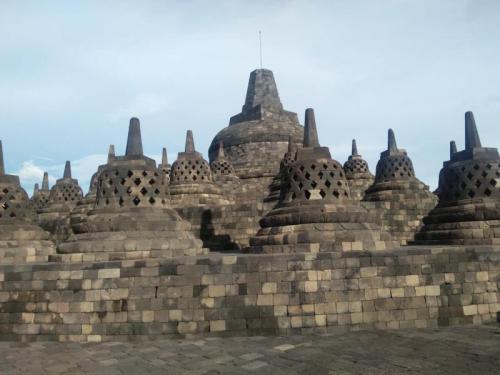
Iwan Kur Kurniawan
Kumpulan Informasi Bisnis Penting Seluruh Indonesia untuk mensukseskan Mitra
History of Borobudur Temple

The Construction of Borobudur Borobudur Temple, situated in Central Java, Indonesia, was meticulously crafted during the 8th and 9th centuries. As the largest Buddhist temple globally and a UNESCO World Heritage Site, it stands as a testament to ancient architectural brilliance. The temple’s construction involved assembling over two million stone blocks without any adhesive. Its three tiers symbolize the Buddhist cosmological realms of desire, form, and formlessness. Each tier boasts intricate relief carvings that depict scenes from both Buddhist teachings and Javanese culture.
The Purpose of Borobudur Borobudur Temple served as a sacred space for Buddhist worship and meditation. Designed to mirror Buddhist cosmology, its three levels represent the aforementioned realms. Pilgrims embarked on spiritual journeys toward enlightenment within its walls.
Additionally, Borobudur Temple acted as a hub for Buddhist education and discourse. Monks congregated here to study and discuss Buddhist scriptures, disseminating the teachings to the broader community.
Borobudur Temple Statistics
- Height: 35 meters
- Circumference: 1.6 kilometers
Tip: When exploring Borobudur Temple, take your time on each level, appreciating the intricate sculptures and reliefs that adorn this remarkable structure.
The Abandonment and Rediscovery of Borobudur
In the 9th century, Borobudur Temple stood as a vibrant center of Buddhist worship and meditation. For centuries, it thrived, echoing with prayers and contemplation. However, the tides of time brought about change. Buddhism’s influence waned in Java, and the mighty Mount Merapi erupted, casting shadows over the temple. Slowly, Borobudur slipped into abandonment, its grandeur fading, and its memory fading from local consciousness. Covered by volcanic ash and embraced by nature’s green veil, it became a hidden relic.
But destiny had other plans. In the early 19th century, Sir Thomas Stamford Raffles, the British ruler of Java, heard whispers of an ancient marvel concealed within the jungle’s embrace. Determined, he embarked on a quest to unveil this enigma. Through painstaking excavation and meticulous restoration, Borobudur emerged from its earthly shroud. The world marveled at its intricate design, its stone narratives, and the echoes of devotion that lingered within its walls.
Rediscovery Efforts
The revelation of Borobudur ignited a fervor—a rekindling of interest in Indonesian history and culture. Archaeologists and historians toiled tirelessly, peeling back layers of time to reveal the temple’s hidden stories. Each relief carving, each stone block, whispered the secrets of a bygone era. Borobudur stood not only as a testament to human ingenuity but also as a poignant reminder: our cultural heritage, fragile yet enduring, deserves our unwavering guardianship.
Today, as the sun bathes its ancient stones, Borobudur stands tall—a beacon of resilience, a bridge between past and present. Its silhouette against the sky beckons pilgrims, scholars, and dreamers alike, inviting them to explore its labyrinthine corridors and seek solace in its timeless wisdom.
Learn more!